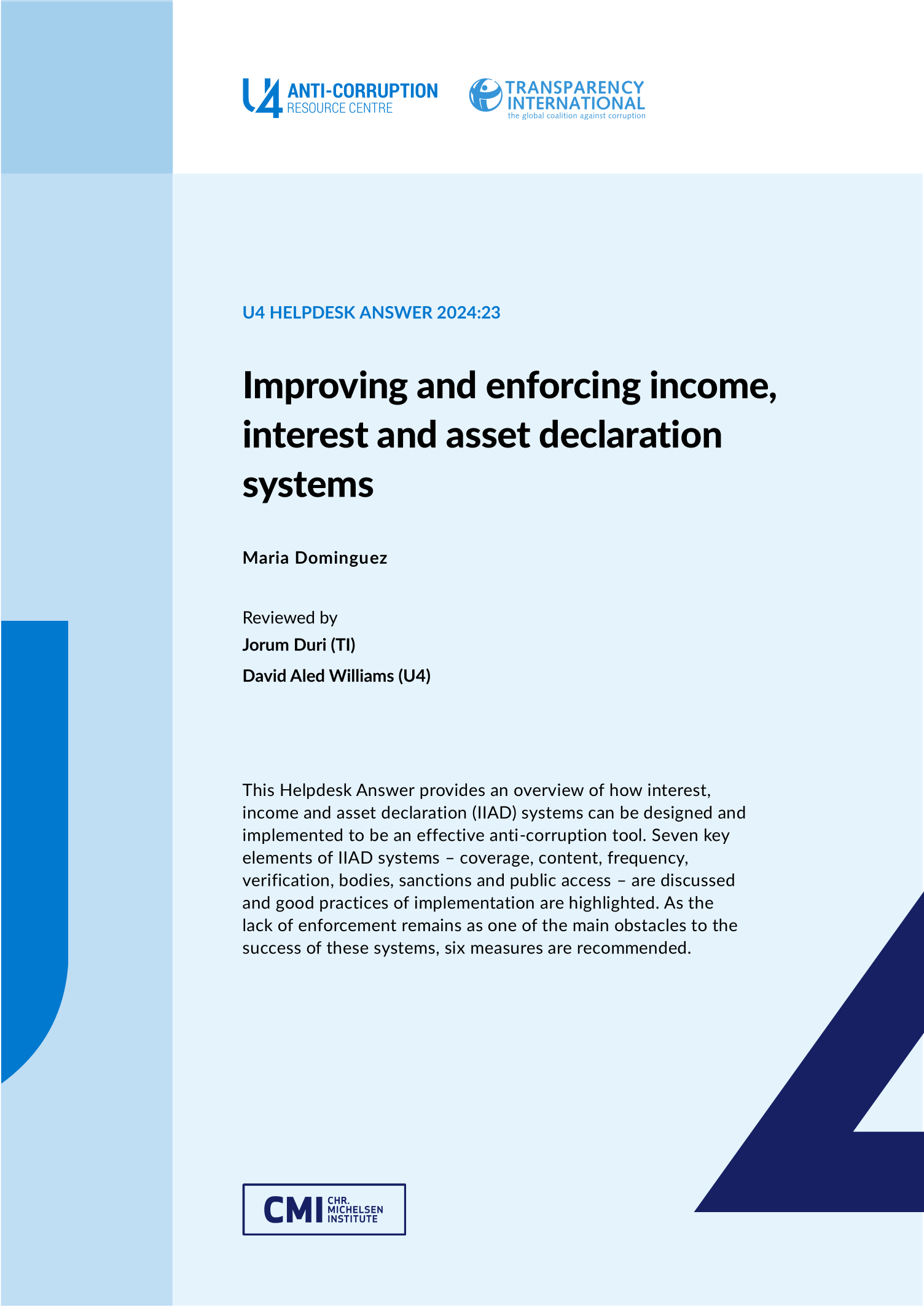Main points
- The causal effect of IIAD systems on lowering corruption is difficult to measure, but studies have shown that the existence of these disclosure laws and mechanisms and public access to declarations are correlated with lower corruption perception levels.
- In sub-Saharan African countries, poor enforcement of IIAD systems are attributed to a lack of political will, insufficient design and a broader culture of corruption and impunity.
- Targeting high-level and high-risk officials, filing periodic declarations, strengthening verification, relying on digital systems, ensuring cooperation between agencies and defining a range of enforceable sanctions are good practices to improve IIAD systems frameworks.
- The incremental approach, naming and shaming, cooperation between national and international agencies, training and associating IIAD systems with broader anti-corruption programmes are indicated as enforcement measures.



